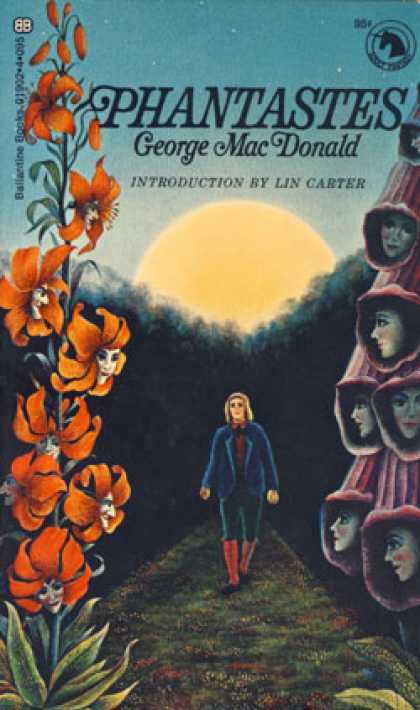Extollager
Well-Known Member
- Joined
- Aug 21, 2010
- Messages
- 9,271
George MacDonald (1824-1905) has impressed a remarkable range of fantasists, including David Lindsay, H. P. Lovecraft, J. R. R. Tolkien, C. S. Lewis, and Lin Carter.
His classic of the weird, Lilith (1895), predated Dracula by two years, and remains, with that novel, one of the two monuments of vampire fiction.
Somewhere, David Lindsay said something to the effect that he was so indebted to Lilith thathe could not have written A Voyage to Arcturus without its example -- or something like that. I may be mistaken. I hope someone has the citation for us.
Lovecraft gives Lilith high marks in his "Supernatural Horror" essay, demonstrating acquaintance with two versions of MacDonald's book and expressing a preference for the earlier.
It seems incontrovertible that the goblins in Tolkien's Hobbit are right out of the first of MacDonald's two Faerie books for children, The Princess and the Goblin.
C. S. Lewis was an advocate for MacDonald throughout his adult life, recording the impact of reading MacDonald's Phantastes in his autobiography.
Lin Carter edited no fewer than three MacDonald books for the famous Ballantine Fantasy series, and included MacDonald's very fine Faerie tale, "Photogen and Nycteris" / "The Day Boy and the Night Girl" in his New Worlds for Old anthology. The Ballantine books by MacDonald are Lilith, Phantastes, and a collection of long tales, titled Evenor.



I anticipate that most discussion for this thread will be on MacDonald's fantasy, but his numerous realistic novels are not without interest. Wilfrid Cumbermede is worthy of attention from readers interested in English Romanticism. Sir Gibbie may have influenced Mark Twain (the two authors considered a collaboration, btw). The Portent, a short novel, will appeal to fans of the Gothic. One edition includes a frontispiece by Maurice Sendak, who also illustrated editions of MacDonald's Faerie tales The Golden Key and The Light Princess.
His classic of the weird, Lilith (1895), predated Dracula by two years, and remains, with that novel, one of the two monuments of vampire fiction.
Somewhere, David Lindsay said something to the effect that he was so indebted to Lilith thathe could not have written A Voyage to Arcturus without its example -- or something like that. I may be mistaken. I hope someone has the citation for us.
Lovecraft gives Lilith high marks in his "Supernatural Horror" essay, demonstrating acquaintance with two versions of MacDonald's book and expressing a preference for the earlier.
It seems incontrovertible that the goblins in Tolkien's Hobbit are right out of the first of MacDonald's two Faerie books for children, The Princess and the Goblin.
C. S. Lewis was an advocate for MacDonald throughout his adult life, recording the impact of reading MacDonald's Phantastes in his autobiography.
Lin Carter edited no fewer than three MacDonald books for the famous Ballantine Fantasy series, and included MacDonald's very fine Faerie tale, "Photogen and Nycteris" / "The Day Boy and the Night Girl" in his New Worlds for Old anthology. The Ballantine books by MacDonald are Lilith, Phantastes, and a collection of long tales, titled Evenor.



I anticipate that most discussion for this thread will be on MacDonald's fantasy, but his numerous realistic novels are not without interest. Wilfrid Cumbermede is worthy of attention from readers interested in English Romanticism. Sir Gibbie may have influenced Mark Twain (the two authors considered a collaboration, btw). The Portent, a short novel, will appeal to fans of the Gothic. One edition includes a frontispiece by Maurice Sendak, who also illustrated editions of MacDonald's Faerie tales The Golden Key and The Light Princess.

